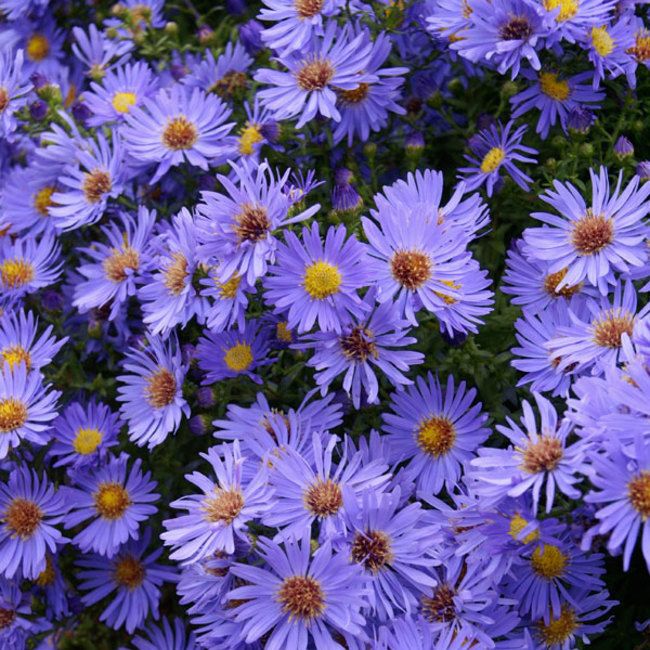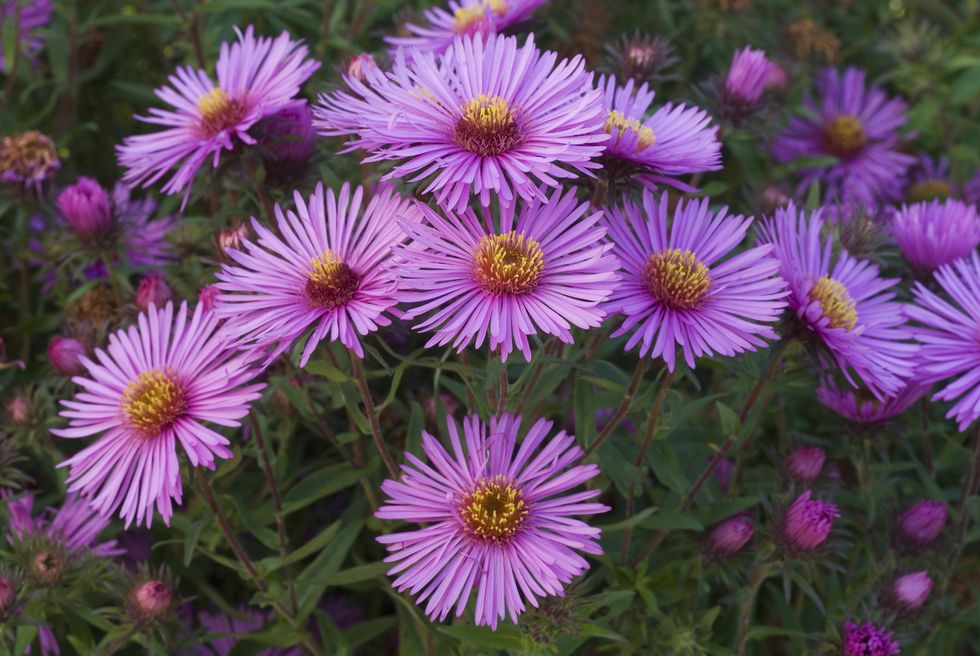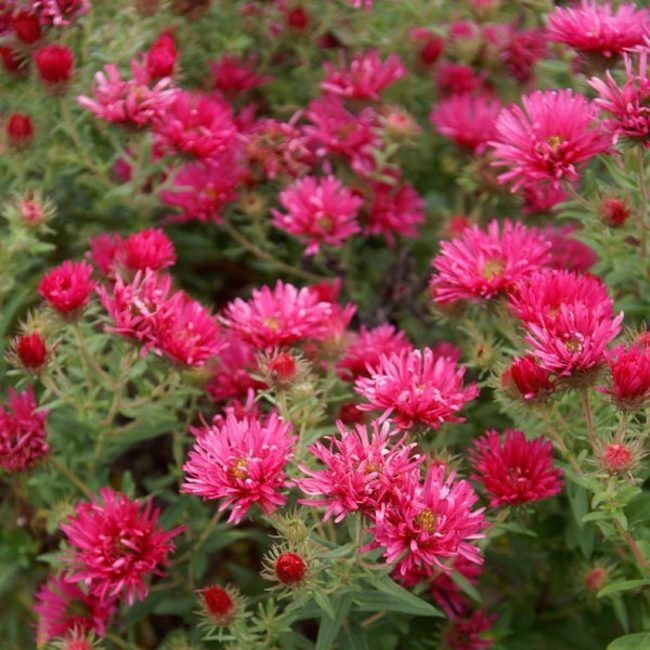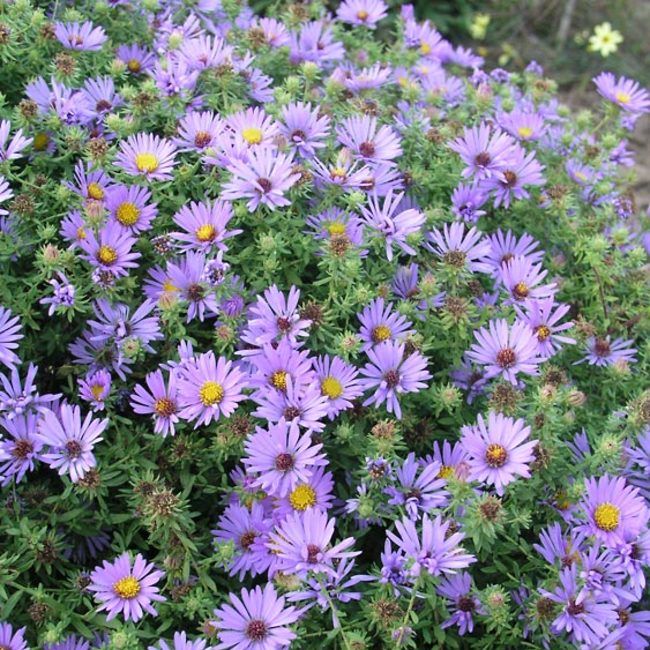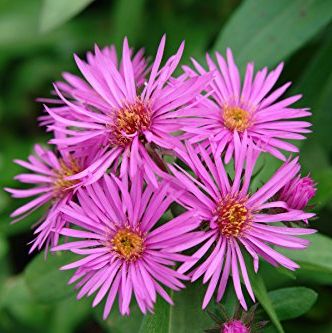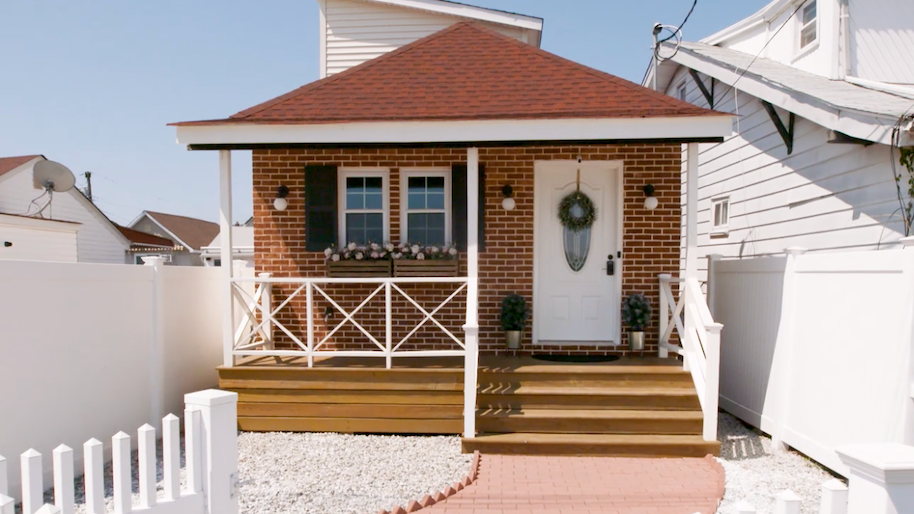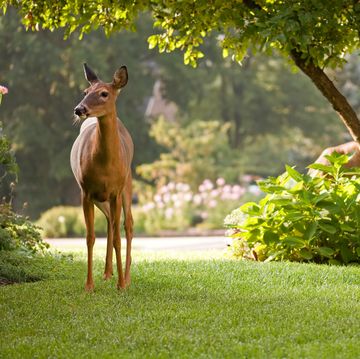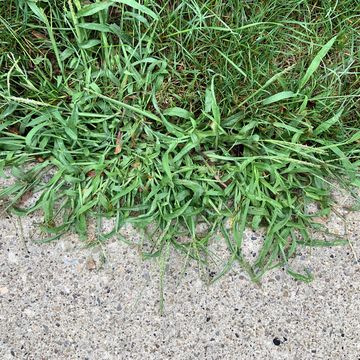When you think of pretty autumn plants, mums automatically come to mind. But there’s another fall-blooming perennial that your garden needs. Asters, a hardy plant that comes in shades of blue, lavender, pink, and purple, start blooming around the same time as mums when everything else in the garden is looking a little tired and shaggy. “They’re a beautiful alternative or companion to mums,” says Jan Boonstra Pavlinak, horticulturalist and help desk expert with Bluestone Perennials. “They’re pretty easygoing flowers, pollinators love them, and their colors are complementary to many other fall-blooming plants.”
Here’s how to grow these eye-catching but lesser-known fall flowers:
What kinds of asters should you plant?
Asters can be planted in USDA Hardiness Zones 3 to 8 (check your zone here). They come in a variety of heights, ranging from 12 inches to 4 feet, so they work either in the back or front of borders depending on size. They may be tall and stately, or some varieties have a more mounded shape. Asters need full sun, which is at least six hours of direct sunlight per day. With too much shade, they get leggy and floppy. Asters usually bloom for weeks from early to late fall.
Varieties to try:
- Bluebird (beautiful blue tall variety)
- October Skies (very late bloomer)
- Alma Potschke (bright, red-pink fringed flowers)
Where can I buy asters?
Many nurseries sell them in the fall, though your choice of varieties may be limited. If you want to plant asters in spring, online retailers have a wider selection. Spring planting also ensures they’ll get established in the ground in time to survive the winter, though they’re not too fussy and will often return next year even if you don’t plant them until early fall.
When should I plant asters?
Asters that are planted in your garden in the spring will bloom in the fall. For late-season planting, you can purchase them already in bloom for fall color. They’ll more than likely return next year, as long as you get them in the ground about six to eight weeks before the ground freezes in your area.
How do I plant asters?
Dig a hole slightly larger than the pot, and plant at the same depth that the plant is in the pot. Fill the hole with compost, and water it well. Keep it watered if you’re having a hot, dry spell, which sometimes occurs in autumn. But don’t overdo it; asters don’t like soggy feet.
How do I care for asters?
They’re not super-finicky, which is another reason to love these old-fashioned favorites. Basically, you don’t need to do anything but enjoy their blooms. If you’ve spring-planted, you may want to “pinch” off the tips of plants when they’re about 10 inches tall. Do that two to three times from late spring to early July to encourage bushiness. “You don’t absolutely have to trim them back, but you’ll get hundreds more flowers if you do, because every place you pinched becomes a new branch,” says Pavlinak.
It’s also not necessary to cut them back after blooms fade in the fall. “I like to leave some anyhow over the winter, so I remember where the plants are next year,” says Pavlinak. Next spring, be patient and don’t yank out the plant too soon because you think it’s not doing anything. They’ll come from the ground up, but they’re slow to show up and usually don’t appear until mid-May. In two to three years when they spread or start to get floppy, use a spade to divide them and replant the new clump elsewhere.
Follow House Beautiful on Instagram.

